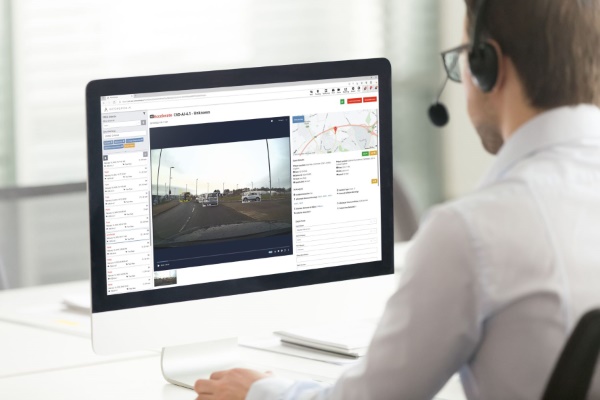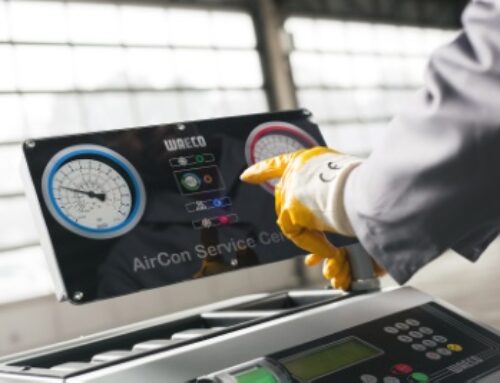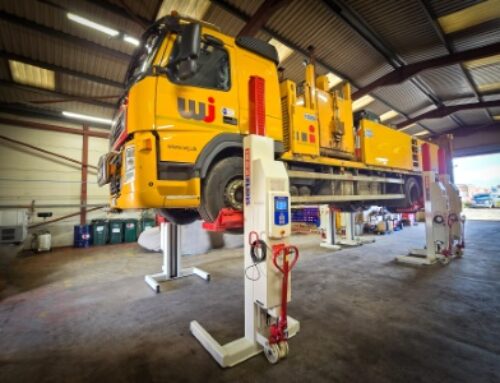VisionTrack: transforming road safety with AI
Technology provider VisionTrack has shared insights into the evolution of artificial intelligence (AI) video telematics and its potential for supporting duty of care, improving driver performance and cutting costs.
 “Moving forward, AI video telematics is expected to transform how vehicle operations approach road safety, making it easy to identify key areas of risk, reduce collisions and near misses, and ensure employees get home safely,” said Richard Kent, VP of global sales at VisionTrack (pictured, right).
“Moving forward, AI video telematics is expected to transform how vehicle operations approach road safety, making it easy to identify key areas of risk, reduce collisions and near misses, and ensure employees get home safely,” said Richard Kent, VP of global sales at VisionTrack (pictured, right).
“There are two types of technology – edge-and cloud-based – which will see AI become increasingly embedded in video telematics hardware and software.
“For edge-based solutions the processing takes place close to the data source, such as a connected camera device, to provide real-time insight, whereas cloud-based solutions collect and process information in a centralised data centre for powerful post analysis.
“AI-powered vehicle cameras, using Advanced Driver Assist System (ADAS), Driver Status Monitoring (DSM) and Blind Spot Detection (BSD) technologies, are already enabling transport operators to maintain safety levels for both their drivers and other road users.
“By automatically monitoring hazards on the road and high-risk behaviours, these devices make it possible to provide real-time feedback straight to the driver.”
Distractions such as mobile phone use, eyes away from road, smoking, eating and drinking, can be detected alongside risks like fatigue, tailgating and nearby vulnerable road users (VRUs), points out Richard – so drivers can be encouraged to change potentially dangerous habits.
“The latest intelligent detection cameras can identify and track vulnerable people where driver visibility is poor, and risk of injury high, so particularly useful for HGVs and specialist vehicles,” he continued.
“These devices can establish the severity of risk dependent on the proximity of a worker, pedestrian, or cyclist to the vehicle, activating internal and external alarms when they enter virtual exclusion zones. This provides the driver with increased time to react and warns other road users of the potential risk.”
Moving forward, says Richard, advances in VRU perception technology will enable AI-powered cameras to provide a nuanced understanding of human behaviour.
“Using machine learning techniques, it will be possible to train devices to accurately predict a person’s actions, and as such, provide drivers with potential collision warnings that give them vital moments to avoid an incident,” he added.
 “Backed by a dataset of hundreds of millions of human behaviours, the edge-based software analyses age, direction, speed and distraction to deliver a much higher degree of accuracy than traditional ADAS technology.
“Backed by a dataset of hundreds of millions of human behaviours, the edge-based software analyses age, direction, speed and distraction to deliver a much higher degree of accuracy than traditional ADAS technology.
“Transport and fleet managers can use the added insight provided by AI video telematics to better understand risk within their vehicle operations and take steps to address issues before they result in a driving incident.
“However, no vehicle operation has the time and resources to manually review every triggered collision, near miss or driving event, so advanced computer vision algorithms can now be used to automatically review huge amounts of data. This means fleet managers are only being presented with information that requires immediate intervention.
“Post analysis can, for example, help overcome the challenge of manually checking hours of downloaded footage. For many medium and larger fleets, triggered events can exceed hundreds per day, making it simply impractical for human review to validate whether a collision occurred, removing false positives and determining if any action is required.
“Taking advantage of the latest advances in AI, enables rapid first notification of loss (FNOL) intervention and the ability to quickly summon emergency assistance, resulting in reduced claims costs as well as enhanced duty of care and driver welfare.”
While the added benefits of AI video telematics are becoming increasingly apparent, Richard says, suspicion amongst drivers can still be an issue.
“Buy-in is essential, so involving drivers and unions at an early stage is an effective way of overcoming any concerns,” he said.
“Taking an honest and transparent approach will help them understand why the decision has been taken and the potential safety benefits not only to the transport operator, but also for them.”











